Year round visitors come from around the world to enjoy the natural beauty of the Canadian Rockies at Banff National Park, a UNESCO World Heritage Site. During an average stay, it’s possible to explore only a small percentage of the expansive wilderness and the region’s diverse flora and fauna. Most first time visitors will create a “to do” list from online sites that rank the Top 10 best activities. To plan a well-rounded vacation, it’s advisable to include a bit of history into the mix.

Approximately 2 million years ago, glaciers sculpted the region’s valleys and mountains. While indigenous people lived in the area for centuries before the first non-native people arrived in the 19th century, Canadian politicians and tycoons immediately saw the value of the region and ultimately transformed this isolated place. The transcontinental railway made the region more accessible. Luxurious hotels were constructed to attract affluent guests, and Canada started a national park system. J. B. Harkin, the man responsible for creating Canada’s national park service, once stated that national parks made people “better, happier, and healthier.”
Lakes and mountain peaks were named after notable people. Lake Louise was named in honor of Louise Caroline Alberta, the fourth daughter of Queen Victoria of England. Victoria became the name of a popular mountain peak. Near the end of the 19th century, Banff had 650 residents, nine stores, six hotels, two churches, numerous saloons, and a school.
LAKE LOUISE
Hiking to Find Bits of History Near Lake Louise
Lake Louise was designated as a forest park in 1892 and a decade later became part of Canada’s national park system. Six separate glaciers feed into Lake Louise, a 70 meters deep lake that is icy for more than half of the year. The water’s spectacular turquoise color is produced by rock flour that is created by the glaciers. From the base area, people can explore many places that take travelers back in time.
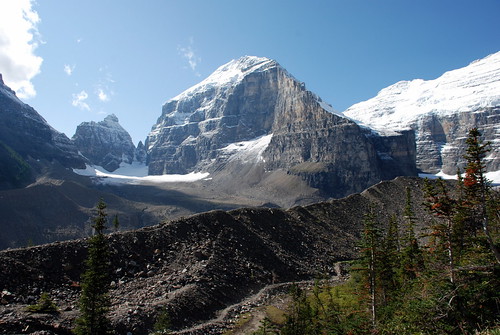
Banff Trail Near Plain of Six Glaciers Teahouse
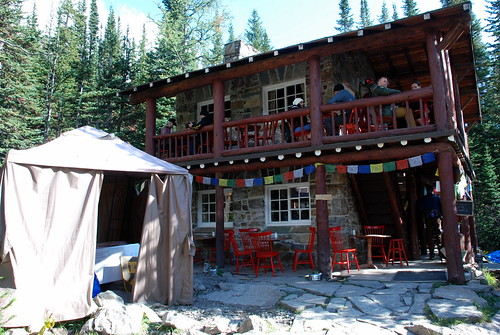
Banff Plain of Six Glaciers Teahouse
Varying levels of ability are required to reach the most popular, historic hiking sites—Plain of Six Glacier Teahouse, Lake Agnes Teahouse, Abbot Pass Refuge Cabin, and the Skoki Lodge. By far, the most frequently traveled paths, and the easiest to reach, are the two teahouses. Canadian Pacific Railway workers constructed these trails at the end of the 19th century. To reach the two-story Plain of Six Glacier teahouse, built in 1927, it will be necessary to walk approximately 3.5 miles each way from the end of the Shoreline Trail. Individuals looking for the shortest walk should consider the trail to the Lake Agnes Teahouse. While the structure was built just a few decades ago, the building reflects the style of the original teahouse. Round trip from the Fairmont Chateau Lake Louise is approximately 4.5 miles. The Abbot Pass Refuge Cabin is undergoing repairs and will most likely be closed throughout the 2019 season.
Backcountry skiers and hikers who are willing to hike or ski 14 miles round trip can experience the first place that was built for ski-tourism. The Skoki Lodge, constructed of logs with saddle-notched corners, opened in 1931. While I didn’t have time to make this memorable journey, I viewed a small exhibit about this historic place while visiting Banff’s Whyte Museum. Peter and Catharine Whyte, the founders of the museum, managed the Skoki Lodge for a couple of years.
BANFF
Cave and Basin National Historic Site
After three Canadian Pacific Railway construction workers discovered the thermal water cave, politicians and wealthy businessmen envisioned a place where people would travel for curative waters and spectacular scenery. Thus, Canada’s first national park was born.
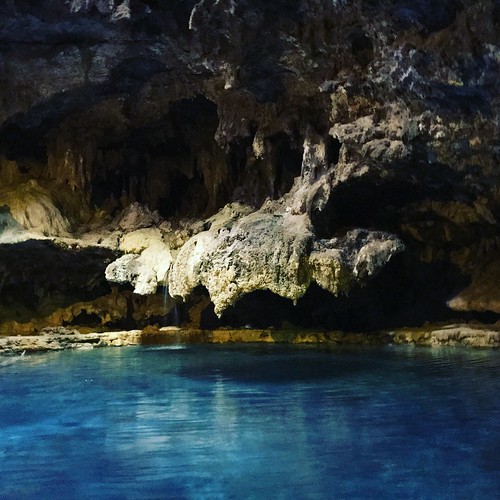
Banff Cave at Cave and Basin National Historic Site
The 1885 rules for the hot spring illustrate how times have changed. Back then, the park stipulated appropriate bathing attire and also determined who was allowed to bathe. Twenty-first century visitors will chuckle at the black and white photos of the mandated clothing. Men and women had to use the pool separately until the 1900s. In 1910, Blacks and Asians could only swim in the early morning, or in the evening, when there fewer people. By 1914, the Bathing Pavilion housed the largest thermal pool in Canada. Visitors enjoyed the hot springs until the 1970s when the pool was closed due to high bacterial counts. Today, the pool deck is covered with a brick floor.
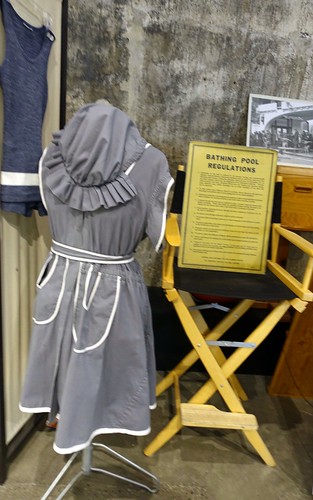
Banff Cave and Basin Swimming Attire
Pavilion exhibits showcase the history of Parks Canada and the thermal springs. Families with school-aged children can pick up an Xplorers Parks Canada booklet for Cave and Basin at the information counter. This engaging, multi-paged book will guide children through the site.
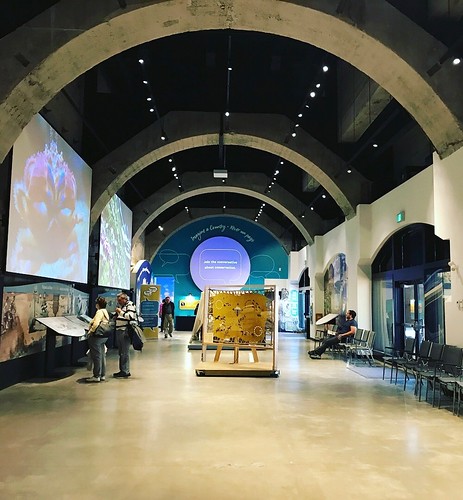
Banff Pavillion at Cave and Basin National Historic Site
Kids and adults may be fascinated by the fact that the Banff Springs snail only lives in Sulphur Mountain’s thermal springs. This snail, about the size of a kernel of corn, floats on mats of bacteria and algae and is an integral part of the ecosystem as a source of food for other species and a controller of algae and bacteria.

Banff Springs Snail Pool
At this historic site, one can also visit the Enemy Aliens, Prisoner of War exhibit which is housed in a separate building. Due to unfounded suspicions that immigrants from enemy countries during World War I would be disloyal, the Canadian government set up internment camps in rural areas. To help defray the cost of a diminished war budget, four national parks opened internment camps. The internees at these sites performed manual labor and construction work in the national parks. I always enjoy exhibits like this one that introduce parts of history that are oftentimes left out of history books.
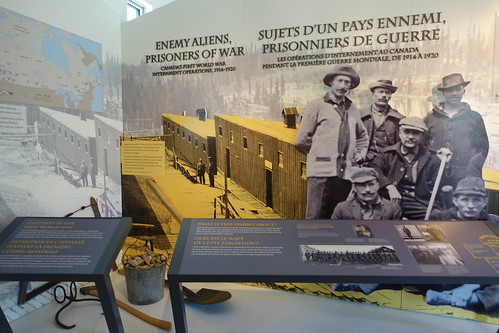
Banff Cave and Basin Enemy Aliens, Prisoner of War Exhibit
If time allows, visitors can stroll short distances on the Boardwalk trail or the Marsh Boardwalk Trail. Another option is to take a hike to Sundance Canyon.
Buffalo Nations Luxton Museum
Norman Luxton (1876-1962) carried through on his dream to build a native arts museum in the 1950s. In his younger days, he sailed with Captain Jack Voss in a retrofitted canoe until he became ill from coral poisoning. After recovering in Banff, he divided his time between business ventures, running a local newspaper, and becoming entrenched in Native American life. Luxton frequently traveled to different parts of Canada to collect First Nation artifacts.
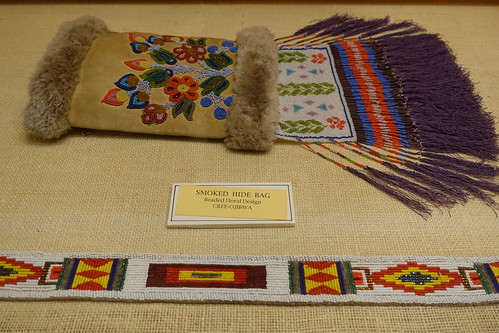
Banff Buffalo Nations Beadwork on Smoked Hide Bag Cree-Ojibwa
Since I’m interested in Native American history and culture, I was eager to see Luxton’s museum. The outside of the building resembles a 19th century wooden fort, constructed with vertical pieces of wood. Inside, spacious rooms display artifacts and freestanding exhibits that depict different aspects of Native American day-to-day life. Larger exhibits showcase the annual Sun Dance 4-day ceremony, a Niitsitapii (Blackfoot Lodge), and daily rituals. Simple wall cabinets display a wide variety of items including decorative quillwork, porcupine quill baskets, embroidery and loom beading from the Plains tribes, utensils and tools, weapons, and regalia or indigenous clothing reflecting culture and history.

Banff Buffalo Nations Luxton Daily Life
After Luxton’s death, the museum changed names and ownership. Even though the exhibits are out of step with modern times, one can learn about different aspects of Native American culture from the simple typed descriptions.

Banff Buffalo Nations Luxton Museum Sun Dance Ceremony
Whyte Museum of the Canadian Rockies
This modern museum was created to “preserve, interpret, and make accessible the history and culture of the Rocky Mountains of Canada.” Peter Whyte (1905-1966) and Catharine (Robb) Whyte (1906-1979), artists and philanthropists, founded this museum. The two budding artists met at the School of the Boston Museum of Fine Arts and chose Banff as their home. Unlike other Banff museums that speak to an earlier era, the Whyte Museum of the Canadian Rockies has incorporated modern signage and audio-visual technology into its exhibits. A well-lit, spacious gallery focuses on their artwork as well as that of others.

Banff Whyte Museum Auto used during King George VI and Queen Elizabeth's visit in 1939 Jim Brewster's Packard
I began my tour with the Artistry Revealed: Peter Whyte and Catharine Robb Whyte and Their Contemporaries exhibit. The artwork was spaced judiciously on cream-colored walls in a room with a vaulted wooden ceiling. As I walked around the room, I was introduced to the Whyte’s paintings from decades ago. Anyone interested in artwork that focuses on indigenous people will love Peter’s pictures of the Stoney and the Blackfoot people. Both Peter and Catharine skillfully captured the aesthetic beauty of the region.
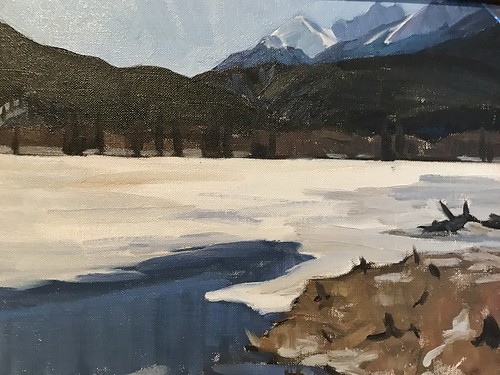
Banff oil on canvas by Catharine Robb Whyte of Beaver Lodge, Vermillion Lake
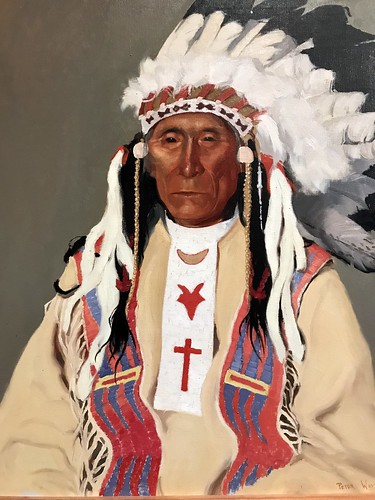
Banff Whyte Museum Oil on Canvas of Hector Crawler 1931 by Peter Whyte
A separate room houses the Gateway to the Rockies exhibition, a wonderful introduction to the Canadian Rockies’ history and culture. As a skier, I was immediately drawn to the exhibit that highlights the early years of skiing in the Canadian Rockies. I was impressed when I learned that Peter and Catharine Whyte ran the remote Skoki Lodge from 1931 to 1933.
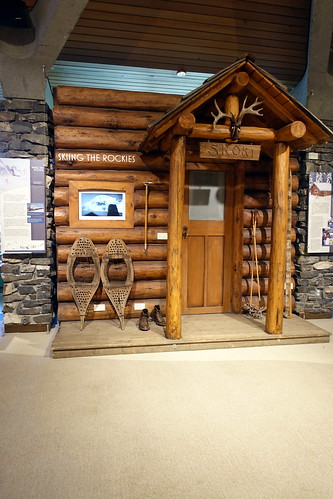
Banff Whyte Museum Skoki Lodge Exhibit
I paused at the display that memorializes the local soldiers killed during WWI. Out of a total population of eight million, the government recruited 650,000 soldiers and close to 3,000 nurses volunteered. Fifty-two men from Banff died while fighting during World War I. Some of their stories were showcased.
Banff’s history was thoughtfully revealed in displays that focused on indigenous people, immigrants, railroad workers, guides and outfitters, early automobiles, and helicopter skiing as well as other topics. The spotlight was also put on prominent individuals.
A visit to this museum will help provide a better understanding of the history and culture of the Canadian Rocky Mountain region. Spending a couple of hours indoors at this museum is a wonderful way to balance an adventure packed stay in Banff.
Banff Park Museum
The Banff Park Museum is the oldest surviving federal building in a Canadian National Park. The cross-log building with a Douglas fir interior was completed in 1903, before electricity was available in Banff. Natural sunlight streams through large lantern windows to illuminate the displays.
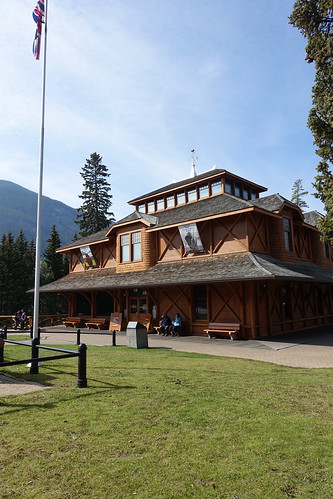
Banff Park Museum Exterior
Even though the building was rehabbed in the 1980s, the antiquated exhibits reflect museum displays from the beginning of the twentieth century. Antique glass-fronted cabinets secure key elements of a collection with more than 5000 specimens of local birds, animals, insects, fish and plants. Larger preserved animals hang on the walls and the ceiling. The original museum also included cultural artifacts that are now part of the Buffalo Nations Museum collection.
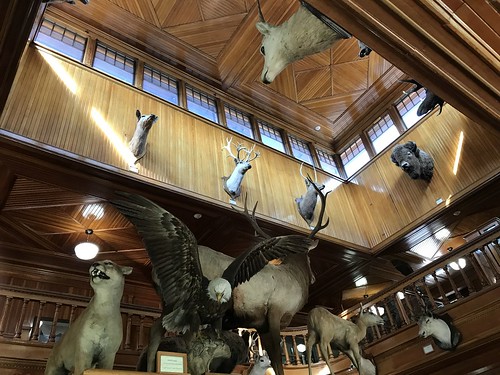
Banff Park Museum Interior
I peered through a window into Norman Bethune Sanson’s former office. The room takes visitors back to the 36 years he worked as the museum curator in the first part of the 20th century. His impact is memorialized on Sulphur Mountain. The highest peak is named Sanson Peak.
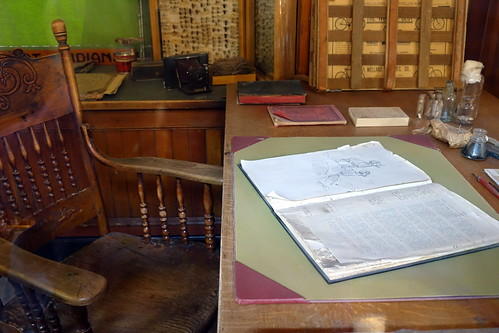
Banff Park Museum Sanson's Office
From 1904-1937, the museum had an outdoor aviary and zoo in the area behind the building. When the park administrators decided to disband the Banff Park Zoo, the animals were either put back in the wild or sent to zoos.
Before departing, I wandered into one room that promoted the efforts being made to reintroduce bison into Banff National Park. This five-year project started in 2017. Crowds gathered around a video that described the process. A poster on the wall stated that the last sighting of bison in Banff had been the 1870s. The adult bisons’ movements are tracked with GPS collars and ear tags are utilized for health and behavior monitoring. Banff National Park management believes that “restoring bison to the park benefits many animals, from bugs to bears.” The Parks Canada October 25th blog posting states, “All 10 calves, out of a possible 10, have been born in Banff’s backcountry bringing the herd to 34 bison.”
While this museum appears outmoded on the surface, it is actually a museum within a museum. Visitors can see natural history in an historical setting.
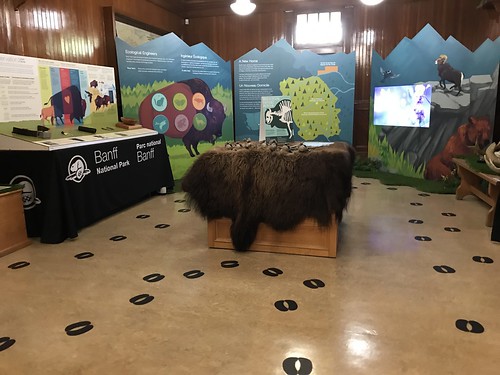
Banff Park Museum Bison Exhibit
Fairmont Banff Springs
Starting in 1888, city dwellers seeking a natural retreat in the Canadian Rockies could book a stay at the wooden hotel next to the Bow and Spray River in Banff. Within a couple of decades, this lavish and opulent resort attracted an international crowd. After a devastating fire destroyed the original building in 1926, a more resilient building was constructed.
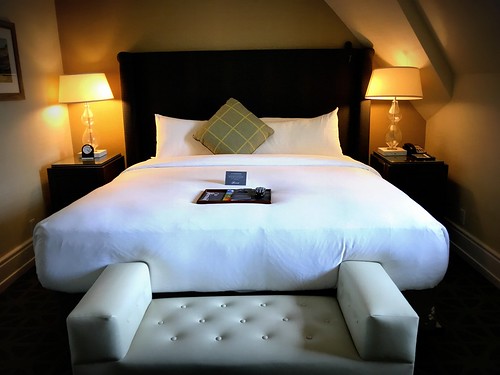
Tiny Room at Fairmont Banff Springs
One black and white image in the museum from the 1920s this caption, “In the 1920s and 1930s, the Banff Springs was a seasonal ‘home away from home’ where guests would arrive with a letter of credit for $50,000 to pay for their three-to four-month stay at the hotel.”
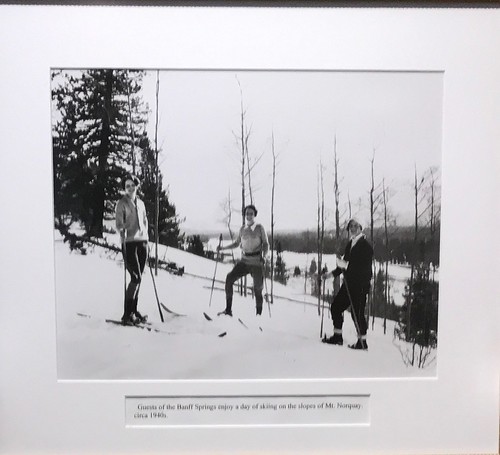
Banff Hotel Museum Image of 1940s skiers
Today, guests stay in a renovated version of the hotel that includes multiple additions and improvements. The castle-like exterior combined with oversized outdoor terraces, large interior public areas decorated in a classic style, and small guestrooms with tiny bathrooms, takes visitors back to the early part of the twentieth century.
A small onsite museum documents the hotel’s remarkable past and acknowledges why the hotel has been designated a National Historic Site of Canada and a UNESCO World Heritage Site.
If the high price point for a guestroom prevents a stay, I recommend visiting the common areas, getting a quick bite to eat on an outdoor terrace, or a strolling through the museum. Any one of these experiences will give you a small sampling of this mega resort that continues to cater to an affluent clientele.
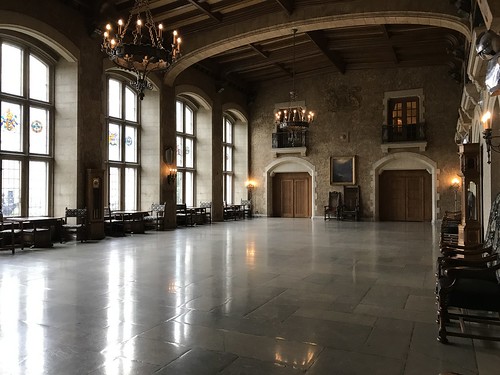
Banff Fairmont Banff Springs Public Area
Finding time to visit one or more of these historical sites will allow history to come alive in Banff National Park.
Sandy Bornstein, the History Comes Alive Through Travel Editor for Wandering Educators, has visited more than 40 countries and lived as an international teacher in Bangalore, India. Sandy’s award-winning book, May This Be the Best Year of Your Life, is a resource for people contemplating an expat lifestyle and living outside their comfort zone. Sandy writes about Jewish culture and history, historical sites, family, intergenerational, and active midlife adventures highlighting land and water experiences.
All photos courtesy and copyright Sandy Bornstein.
